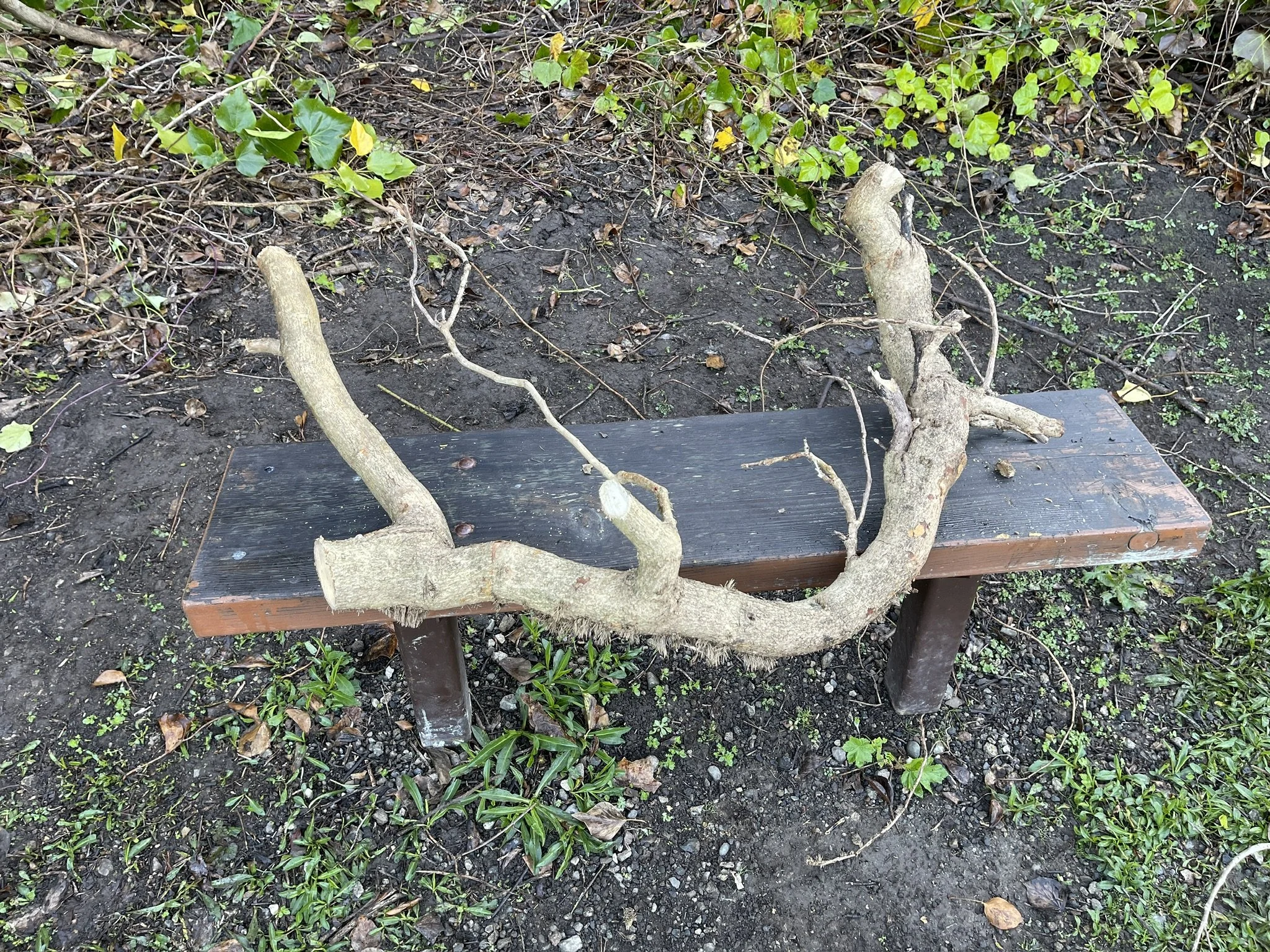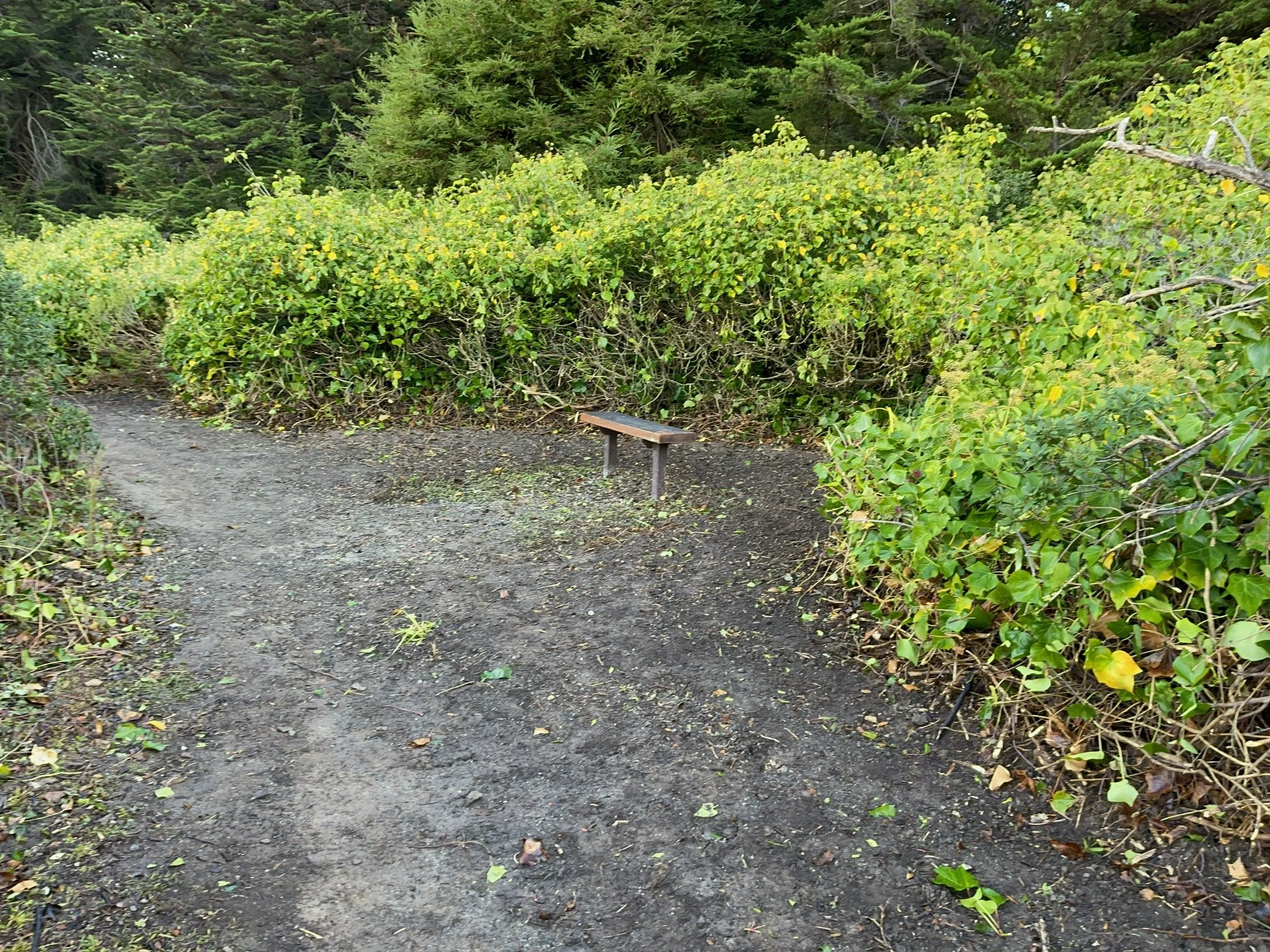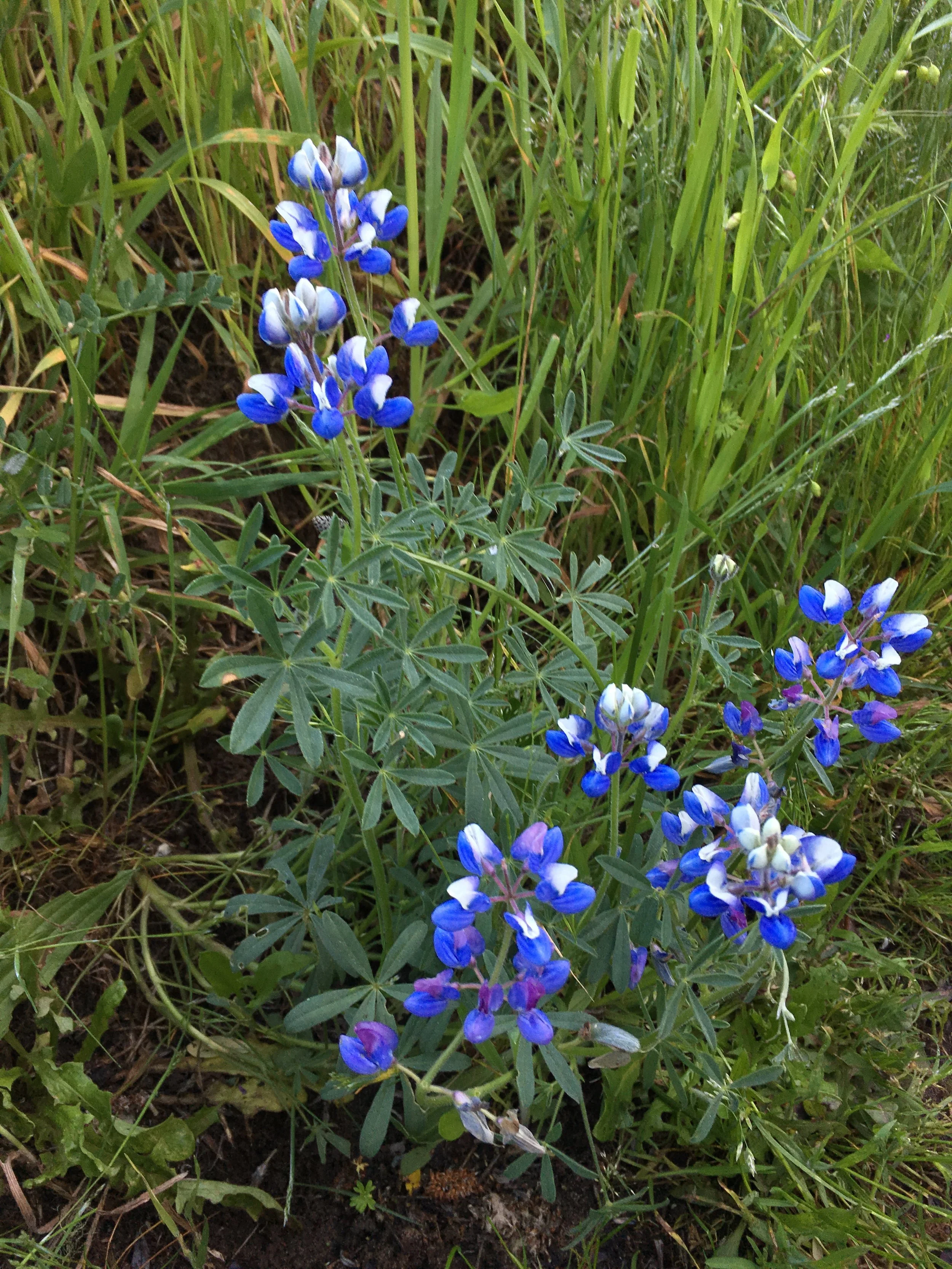Doug's Mountain Journal
A Chronicle of Natural History on San Bruno Mountain
Doug Allshouse has been writing his seasonal Mountain Journal for many years. We are very pleased to share his reflections on the natural history of the Mountain. Together with David Nelson, he wrote San Bruno Mountain: A Guide to the Flora and Fauna. The book was published by Heyday Books in November 2022 and can be purchased here.
Spring 2025
April must be an award-winning actress because she played July so well! She had it all: cool weather, overcast skies, and fog—oh so much fog. To add insult to injury, the fog was not at all productive, accounting for just three hundredths of an inch of actual precipitation for the entire month! Then on the weekend of the 14th the winds got really bad. How bad? So bad that the ravens decided to sit it out. Normally when the winds are around 10-20 mph ravens love to fly in community flocks and do aerial gymnastics and play games with each other. Birds fly to get from one place to another: to escape trouble, to patrol their territory, or to hunt for food. Ravens do all that too, but no other bird that I have ever observed flies for pure enjoyment. Despite April’s theatrical performance, nature's cast of plants continued to thrive on San Bruno Mountain. They embraced the cooler air, even though they got cheated out of the more generous rains of late spring. The mountain’s unique ecosystem is always full of surprises and adaptations, making each walk a new adventure.
Life is full of surprises, so imagine my surprise when Jake Sigg (my mentor) emailed me to tell me that he read my winter journal. He was curious about the English ivy in the two photos showing before and after they were removed from eucalyptus trunks. Using a magnifying glass to better see the ivy leaves he was positive that the ivy was not English ivy (Hedera helix), but was Algerian ivy (H. canariensis), also known as Canary Islands ivy. I was taught over thirty-five years ago that the ivy in Fog Forest, the Bog and the Saddle was English ivy. No one ever mentioned this other ivy, not even the 1990 flora. An online visit to e-Jepson only added to the confusion because the descriptions for both plants are nearly identical: For English ivy it reads “on flowering stems, leaf less than 15 centimeters and ovate to diamond shaped. For Algerian ivy it reads “on flowering stems, leaf less than 15 centimeters and ovate to cordate (heart-shaped). The key is based on flowering stems, and on San Bruno Mountain the only stems that flower are stems that get off the ground by climbing walls or tree trunks or are very mature and have a southern sunny exposure. The vine stem changes from vegetative on the ground to woody when it manages to get off the ground. The leaf shape changes when the vine flowers. So, we have another vine to worry about and the only way to truly be positive about identification is through DNA.
The ivy on the upper Bog Trail that has formed an impenetrable thicket over eight feet high was mostly cleared in July 2001 on a corporate restoration workday by Macy’s employees. At that time the ivy was mostly ankle-deep next to a bench on the trail, and they have a southern sunny exposure. Over the next two decades other vines basically climbed over a few vines that managed to find something to climb upon, and I now know what that something was. Here is the back story.
In my Winter 2025 journal I wrote about a Bog Trail restoration project involving Go Native. It is a native plant nursery near Half Moon Bay that also is doing habitat restoration for County Parks. I was so impressed with their work that I decided to augment their work with some of my own. After stripping ivy off of 29 eucalyptus trees I moved a few hundred feet west on the Bog Trail to the bench and the ivy. I suspect that Go Native might have sprayed herbicide on some of the ivy because a couple of months later the leaves turned yellow and eventually fell off the woody stems.
Now they were exposed and with my trusty Corona saws and Fiskars pruning shears I went to work. Go Native cleared the ivy back about two feet from the bench and when I cleared a few feet more I noticed a few branches of a coffee berry bush. The more I cleared, I noticed that the lower branches of the bush were extremely distorted. The vines had infiltrated the structure of the coffee berry’s branches causing them to abruptly bend in opposite directions just to seek light in any way they could.
Over time the vine stems became so woody that, at ground level, they were up to 10 centimeters (4 inches) in diameter! It has been a long haul, and I am still working on this site, but I have managed to clear the vines over ten feet from the bench. I saved a native coffee berry and opened a path to a rare and thriving redwood tree that would have been threatened by the ivy. This will be one of a few never-ending projects for as long as I am able to do them.
And then there was prickly sow thistle (Sonchus asper), an annual to biennial weed with moderately sharp spiky leaves on reddish hollow stems exposing milky juice when broken. Compared to its sibling common sow thistle (S. oleraceus) it is very invasive and favors moist disturbed soils, and partial shade. In late May I noticed a particularly large patch of it under the eucalyptus that I freed from ivy several months before. Over four days and two hours of work I managed to extract 1,128 plants in an area covering almost an acre. I also encountered about eighty eucalyptus sprouts, one to three inches tall, and removed them.
The removal of weeds on some of the Bog Trail has supplied a couple of surprises. A few of our native low growers suddenly have some room to spread out. I spotted a couple of nice patches of suncups (Taraxia ovata) on both sides of the upper Bog Trail. This little guy has green leaves, red stems, and yellow flowers. The stem is actually an elongated calyx tube—similar to a style—and the ovary is in the ground. It is believed that this is an adaptation to grazing animals and the seeds are distributed by ants and earthworms. The leaves were eaten and also used to make tea by the Ohlone and Miwok people.
Also popping up on the trailside is sky lupine (Lupinus nanus) , one of two annual lupines on the Mountain. It is very similar to miniature lupine (L. bicolor) and both species are highly variable in their range and within their species and are low growing. It was nice to see this pop of color.
I delayed my spring journal to include the annual weather report since the last day of the season is June 30. Two consecutive drought seasons from 2019 to 2021 amounted to just 26.55 inches. From July 2021 to June 2024, we had 87.91 inches, which is fantastic given that the average seasonal precipitation is 20-24 inches. My numbers also reflect fog because we get many days of measurable precipitation. Over the past eleven years, that amounted to an average of 66 days and 1.26 inches of precipitation. Many plants benefit from foliar uptake, the ability to absorb moisture through the stomata (pores) of their leaves which is supplied by fog. That phenomenon helps define what grows here by supplying moisture during dry summer months. This year’s 20.47 inches total consisted of 19.01 inches of rain and 1.46 inches of fog. April (0.34), May (0.16), and June (0.14) were far below average and produced only 0.64 Inches. While the water table seems to remain quite high, the dearth of moisture since February is not good news. On the bright side perhaps the cool weather and overcast skies have offset our dry days.
I hope that telling you about my mornings of weeding various ivies, wild radish, poison hemlock, mallow, curly dock, mustards, sweet pea, prickly ox tongue, and bull, Italian, and sow thistles will inspire you to volunteer with Mountain Watch. It is fun and refreshing work and the Mountain really needs your help. You’ll be glad you did.
See you on the Mountain…
Doug








